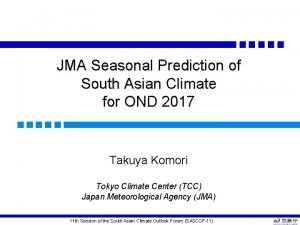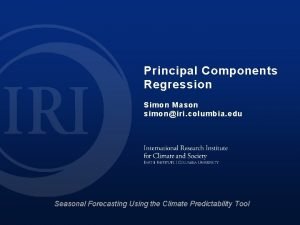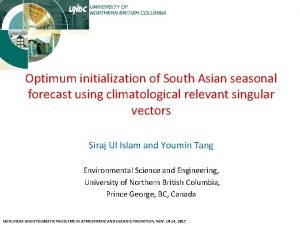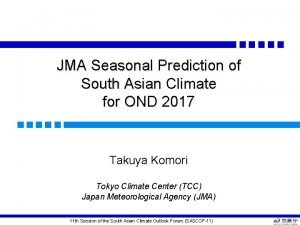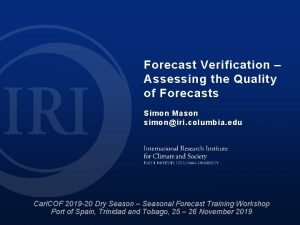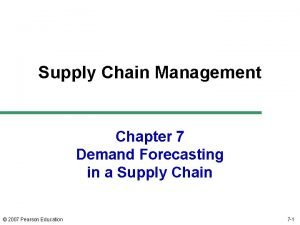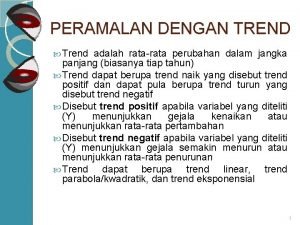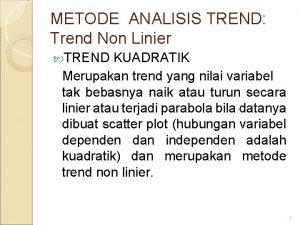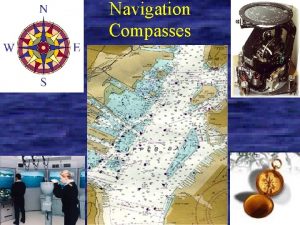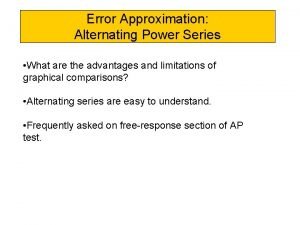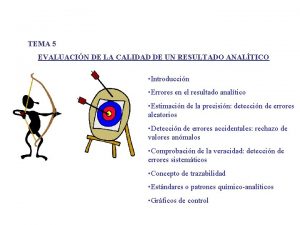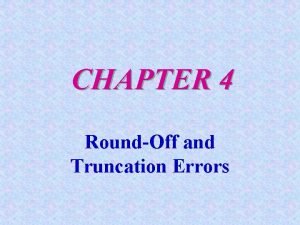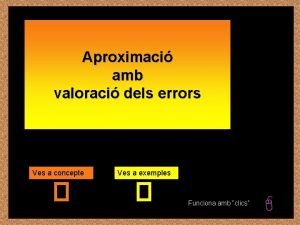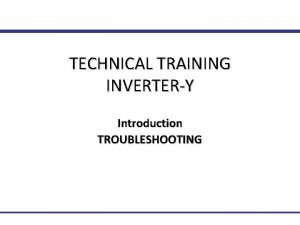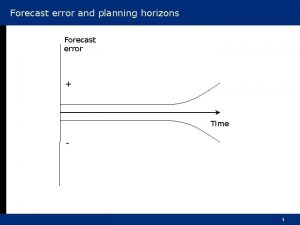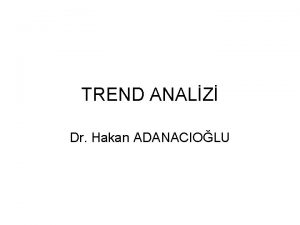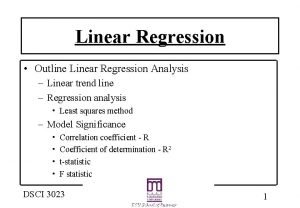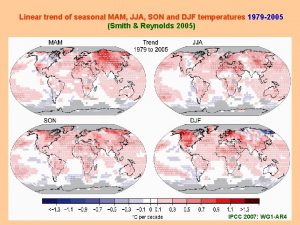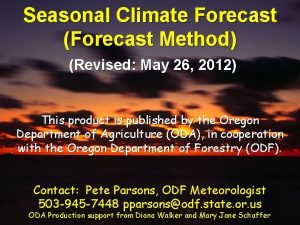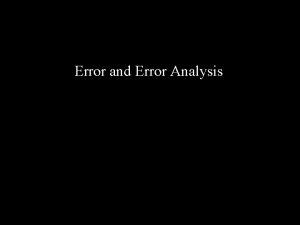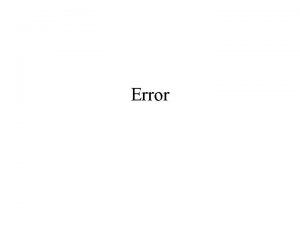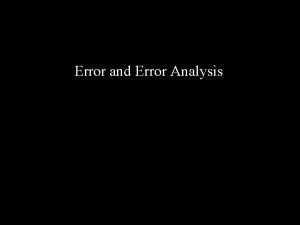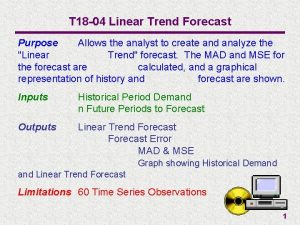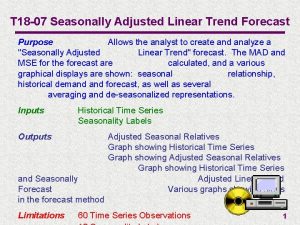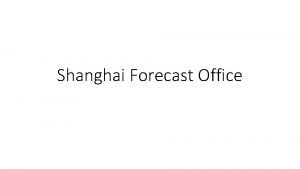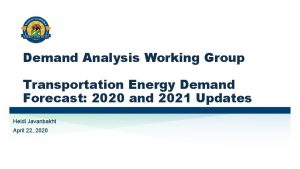Forecast 2 Linear trend Forecast error Seasonal demand




















- Slides: 20

Forecast 2 Linear trend Forecast error Seasonal demand

Common Nonlinear Trends Figure 3. 5 Parabolic Exponential Growth 3 -2

Linear Trend Equation Ft Ft = a + bt 0 1 2 3 4 5 • • 3 -3 Ft = Forecast for period t t = Specified number of time periods a = Value of Ft at t = 0 b = Slope of the line t

Calculating a and b n (ty) - t y b = 2 2 n t - ( t) y - b t a = n 3 -4

Linear Trend Equation Example 3 -5

Linear Trend Calculation b = 5 (2499) - 15(812) 5(55) - 225 = 12495 -12180 275 -225 812 - 6. 3(15) a = = 143. 5 5 y = 143. 5 + 6. 3 t 3 -6 = 6. 3

Techniques for Seasonality • Seasonal variations – Regularly repeating movements in series values that can be tied to recurring events. • Seasonal relative – Percentage of average or trend • Centered moving average – A moving average positioned at the center of the data that were used to compute it. 3 -7

Associative Forecasting • Predictor variables - used to predict values of variable interest • Regression - technique for fitting a line to a set of points • Least squares line - minimizes sum of squared deviations around the line 3 -8

Linear Model Seems Reasonable Computed relationship A straight line is fitted to a set of sample points. 3 -9

Linear Regression Assumptions • Variations around the line are random • Deviations around the line normally distributed • Predictions are being made only within the range of observed values • For best results: – Always plot the data to verify linearity – Check for data being time-dependent – Small correlation may imply that other variables are important 3 -10

A Good Forecast ¨ Has a small error ¨ Error = Demand - Forecast

Measures of Forecast Error et a. MAD = Mean Absolute Deviation b. MSE = Mean Squared Error c. RMSE = Root Mean Squared Error n Ideal values =0 (i. e. , no forecasting error)

= 40 =10 4 MAD Example What is the MAD value given the forecast values in the table below? At Month 1 2 3 4 5 Ft Sales Forecast 220 n/a 250 255 210 205 300 325 315 |At – Ft| 5 5 20 10 = 40

Measures of Error 1. Mean Absolute Deviation (MAD) t At Ft et |et| e t 2 Jan 120 100 20 20 400 Feb 90 106 -16 16 -1 1 1 -10 10 100 17 17 289 -20 20 400 -10 84 1, 446 Mar April May June 101 91 115 83 102 101 98 103 256 84 6 = 14 2 a. Mean Squared Error (MSE) 1, 446 = 241 6 2 b. Root Mean Squared Error (RMSE) An accurate forecasting system will have small MAD, MSE and RMSE; ideally equal to zero. A large error may indicate that either the forecasting method used or the parameters such as α used in the method are wrong. Note: In the above, n is the number of periods, which is 6 in our = SQRT(241) =15. 52

= 550 =137. 5 4 MSE/RMSE Example What is the MSE value? RMSE = √ 137. 5 =11. 73 At Month 1 2 3 4 5 Ft Sales Forecast 220 n/a 250 255 210 205 300 325 315 |At – Ft| (At – Ft)2 5 5 20 10 25 25 400 100 = 550

Controlling the Forecast • Control chart – A visual tool for monitoring forecast errors – Used to detect non-randomness in errors • Forecasting errors are in control if – All errors are within the control limits – No patterns, such as trends or cycles, are present 3 -16

Sources of Forecast errors • Model may be inadequate • Irregular variations • Incorrect use of forecasting technique 3 -17

Tracking Signal • Tracking signal –Ratio of cumulative error to MAD Tracking signal (Actual -forecast) = MAD Bias – Persistent tendency forecasts to be Greater or less than actual values. Good tracking signal has low values 3 -18

Choosing a Forecasting Technique • No single technique works in every situation • Two most important factors – Cost – Accuracy • Other factors include the availability of: – Historical data – Computers – Time needed to gather and analyze the data – Forecast horizon 3 -19

To Use a Forecasting Method • Collect historical data • Select a model – Moving average methods • Select n (number of periods) • For weighted moving average: select weights – Exponential smoothing • Selections should produce a good forecast …
 Jma seasonal forecast
Jma seasonal forecast Iri columbia seasonal forecast
Iri columbia seasonal forecast South asian monsoon
South asian monsoon Jma seasonal forecast
Jma seasonal forecast Iri columbia seasonal forecast
Iri columbia seasonal forecast Systematic component = (level + trend) * seasonal factor
Systematic component = (level + trend) * seasonal factor Trend kuadratik
Trend kuadratik Trend non linier adalah
Trend non linier adalah Type 1 error vs type 2 error example
Type 1 error vs type 2 error example Type 1 error vs type 2 error example
Type 1 error vs type 2 error example Cdmvt formula
Cdmvt formula What is an alternative hypothesis
What is an alternative hypothesis Top pan balance zero error
Top pan balance zero error Alternating series error bound
Alternating series error bound Error sistematico y error aleatorio
Error sistematico y error aleatorio Error
Error Que es falacia
Que es falacia Round off error and truncation error
Round off error and truncation error Error absolut i error relatiu
Error absolut i error relatiu O'general ac error code list
O'general ac error code list During error reporting, icmp always reports error messages
During error reporting, icmp always reports error messages
